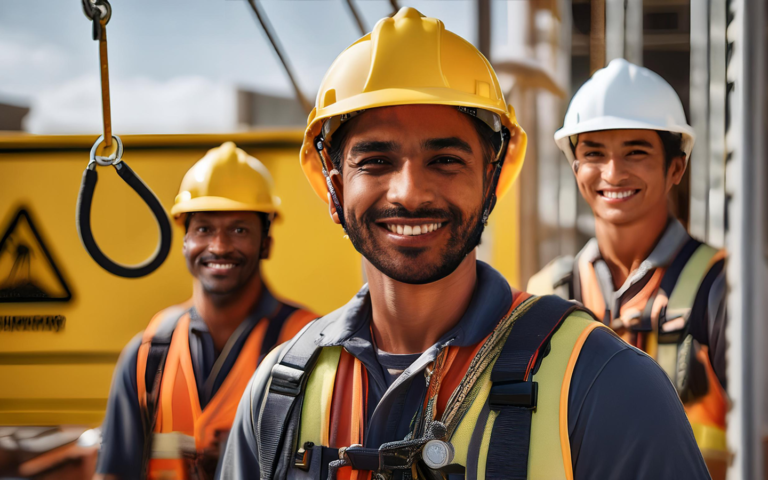
Fall Accident Prevention: Correct Use of Harnesses and Lifelines

Preventing fall accidents through the correct use of harnesses and lifelines is critical across various industries. OSHA standards, such as 29 CFR § 1926.502, outline comprehensive guidelines for fall protection systems and personal fall arrest equipment (Fall protection systems criteria and practices, 2023). Ensuring that workers are trained in the correct use of harnesses and lifelines can significantly reduce the risk of falls, which remain one of the leading causes of workplace injuries and fatalities.
The Importance Across Industries
- Transportation Industry: Fall accident prevention is crucial for the transportation industry, particularly when loading and unloading cargo or maintaining vehicles at height. Compliance with fall protection standards ensures worker safety and reduces downtime caused by incidents. Key Safety LLC offers training programs and compliance audits to ensure that safety practices meet OSHA regulations.
- Construction Industry: The construction sector often deals with high-risk activities involving work at height. OSHA’s 29 CFR § 1926.501 mandates fall protection for employees working at heights above six feet (Duty to have fall protection, 2023). Proper use of harnesses and lifelines can save lives and prevent severe injuries. Key Safety LLC specializes in creating SOPs and training tailored to the unique challenges of the construction industry.
- General Industry: Fall hazards also exist in general industry settings, such as during maintenance work or warehouse operations. OSHA’s fall protection standard 29 CFR § 1910.28 provides guidelines for protecting workers on elevated surfaces (Duty to have fall protection and falling object protection, 2023). By implementing effective fall prevention measures, companies can create safer work environments. Key Safety LLC helps businesses develop customized safety protocols that align with industry standards.
Common Safety Practices for Fall Prevention
To reduce fall risks, companies should implement the following practices:
- Ensure proper training on the use of harnesses and lifelines.
- Conduct regular inspections of fall protection equipment.
- Verify correct fitting and adjustment of harnesses.
- Maintain secure anchorage points for lifelines.
- Provide clear guidelines on when and how to use fall protection systems.
- Implement frequent safety drills and emergency response training.
- Ensure that all equipment complies with OSHA standards.
- Foster a safety culture emphasizing the importance of fall prevention.
- Use technology for real-time monitoring of fall protection equipment.
- Keep thorough records of training and equipment inspections.
Key Safety LLC assists organizations in adopting these practices, aligning operations with OSHA, NIOSH, and other relevant safety standards to mitigate fall-related incidents.
References
Standard for Fall Protection Systems, OSHA Title 29 CFR § 1926.502. (2023). https://www.osha.gov/laws-regs/regulations/standardnumber/1926/1926.502
Standard for Duty to Have Fall Protection, OSHA Title 29 CFR § 1926.501. (2023). https://www.osha.gov/laws-regs/regulations/standardnumber/1926/1926.501
Standard for Walking-Working Surfaces and Fall Protection, OSHA Title 29 CFR § 1910.28. (2023).https://www.osha.gov/laws-regs/regulations/standardnumber/1910/1910.28
National Institute for Occupational Safety and Health. (2024). About Falls in the Workplace.https://www.cdc.gov/niosh/falls/about/?CDC_AAref_Val=https://www.cdc.gov/niosh/topics/falls/

